NASA Shares Photo Of Beautiful Exploding Star, ‘Tiny Shards Of Glass’
Even with the naked eye alone, looking up at the stars is such a beautiful experience. Knowing every speck of light in our sky is the result of explosions happening impossibly far away from us, seeing the results of the universe's expansion from our own homes, it's amazing!
Being able to see these stars in close detail is even more incredible, seeing the full spectrum of colors and every beautiful detail present in their presence. The latest in NASA's telescopic photography recently captured a photo of a rather famous star, sharing brand new information about its own destruction.
A New Look
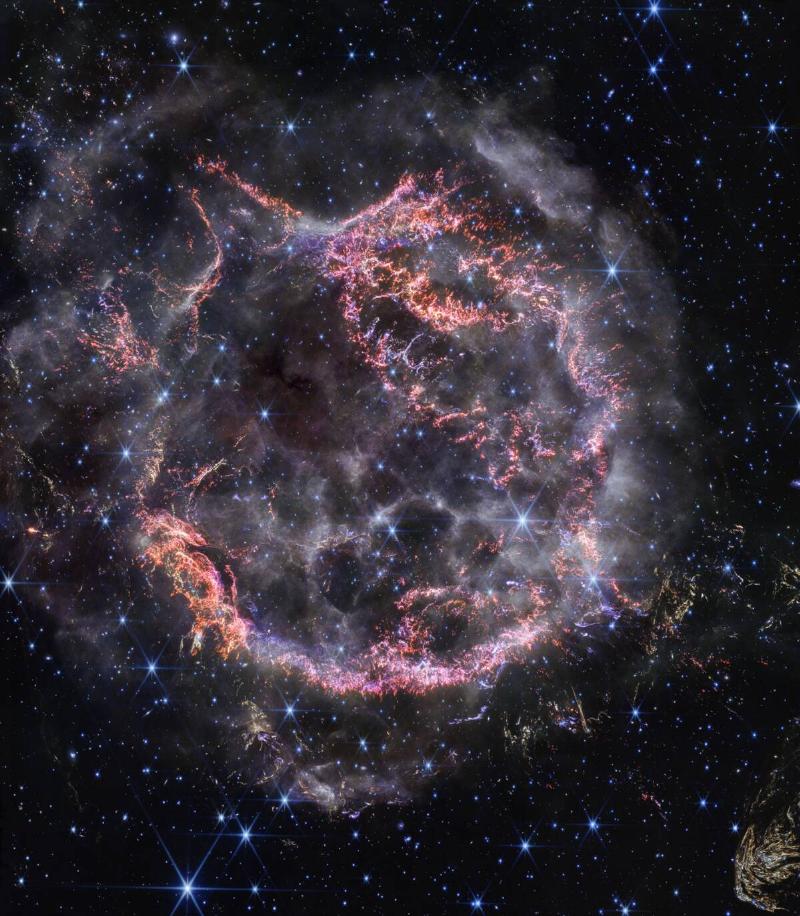
NASA has recently shown off some stunning photos of a star named Cassiopeia A in the midst of exploding, creating a beautiful and fantastical sight.
Cassiopeia A rests roughly 11,000 light years away from Earth and is one of the most well-studied "supernova remnants" out there. The photos were taken with the James Webb Space Telescope, whose Near-Infrared Camera was able to photograph the exploding star at a much higher resolution than we've ever seen before.
The Tinitest Details
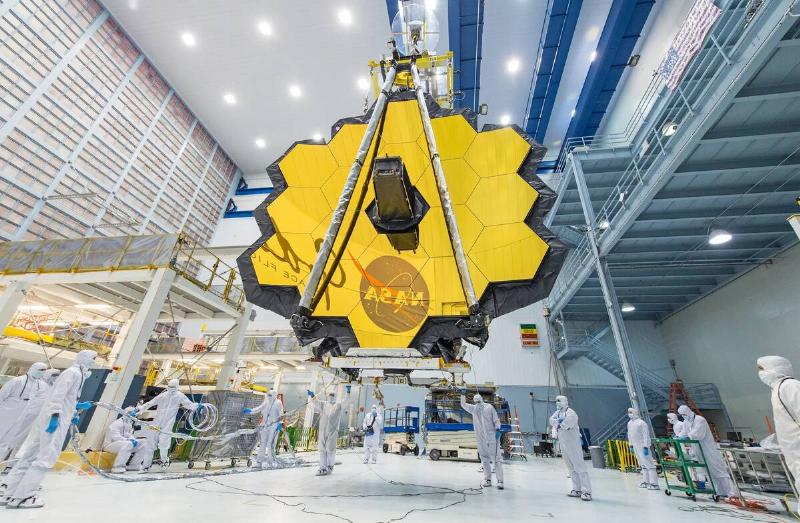
"With NIRCam's resolution, we can now see how the dying star absolutely shattered when it exploded, leaving filaments akin to tiny shards of glass behind," said Purdue University research team lead Danny Milisavljevic.
"It's really unbelievable after all these years studying Cas A to now resolve those details, which are providing us with transformational insight into how this star exploded."
Beyond just enhanced detail, the NIRCam also showed off new, never-before-seen colors present in the explosion.
Spectrums Of Light
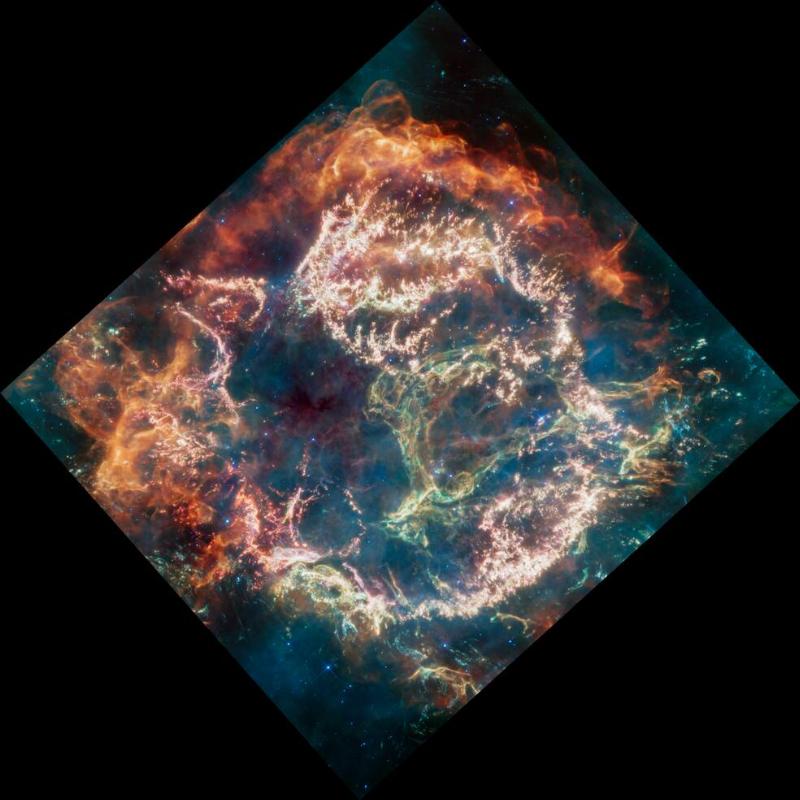
These new colors helped researchers spot new details. For example, the orange and pink mixtures make up the inner shell of the supernova, wherein they were able to spot the "tiniest knots of gas" that will go on to form new stars and even planetary systems far, far in the future.
The Cas A explosion technically happened roughly 340 years ago, what we see now are the remnants of it and the way the explosion site continues to evolve in the space around it, so while the sight of Cas A exploding isn't new, seeing it in such detail and within such a color spectrum certainly is.
Glowing Green
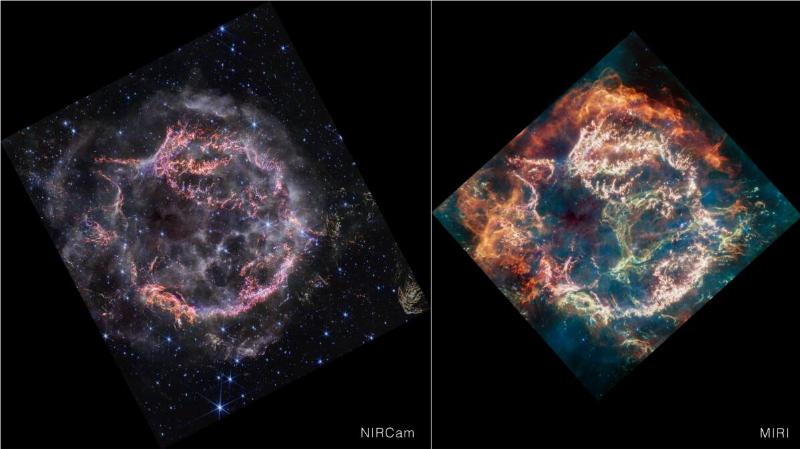
However, there remain some mysteries about Cas A, namely the aura of green light that appeared in previous photographs that are now missing from the latest capture.
That aura was nicknamed the 'Green Monster.' Researchers believe it's the result of supernova debris pushing its way through the space around the explosion, notably the gas that once surrounded the star, creating a green glowing effect. However, it appears to have dissipated now, or perhaps the NIRCam simply can't perceive that spectrum of light.
New Formations
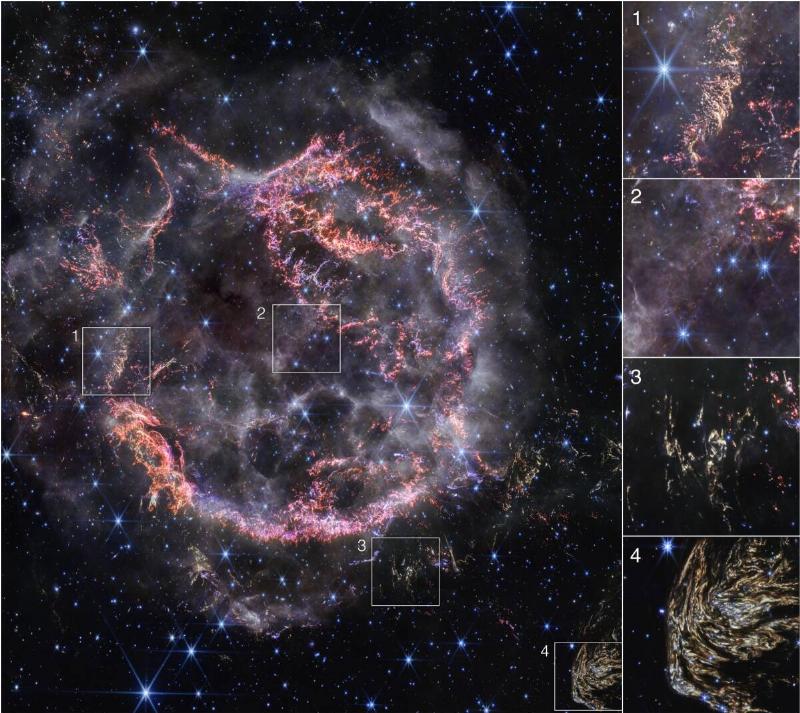
The other mystery is the shape in the bottom right corner of the updated image. NASA scientists were "absolutely stunned" to see it, saying it "appears like an offspring of the main supernova."
They aptly named that shape Baby Cas A and believe it to be a 'light echo,' light from the explosion having finally reached distant dust that it is now warming up, creating the glowing effect.
These new discoveries about bodies that have already been under heavy study for years now are all thanks to the Webb telescope, which continues to stun with every beautiful photo it has taken since it began operation last year.





